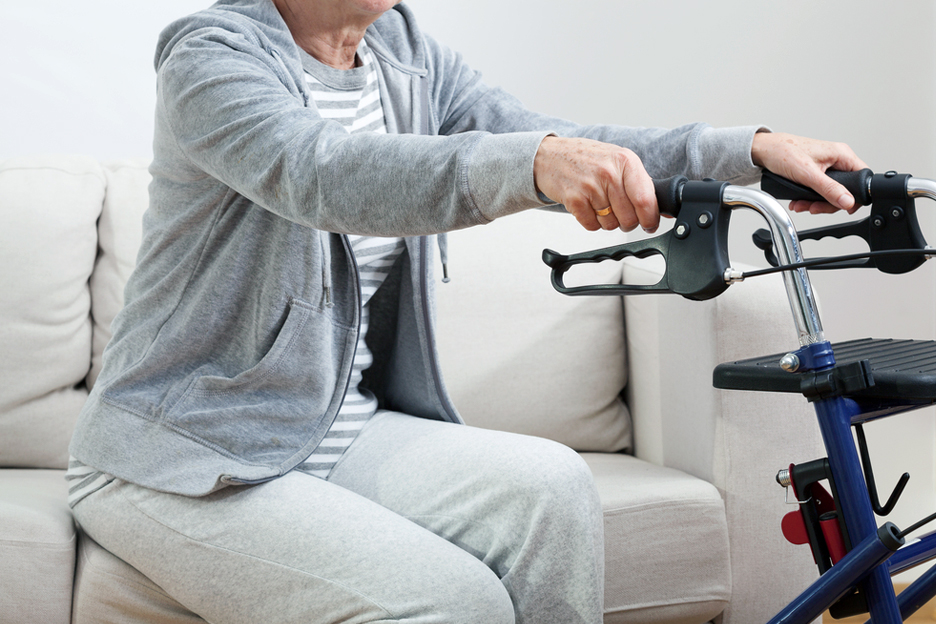Many among us will need, at one point or another, a mobility aid to help us walk or remain stable. Whether it’s for a permanent problem or a temporary one, it is important to choose the aid that is the most appropriate for the situation. Here’s how to do so.

Mobility aids
No matter your age, mobility aids can be of great help. But what are they and how can you choose the one that best suits you?
There are many situations for which mobility aids can be necessary: chronic problems that require a long-term aid (arthritis, reduced mobility due to aging, balance disorder, etc.) or temporary problems that only require an aid for a short period of time (fracture, sprain, surgery, etc.).
Mobility aids include:
- crutches
- canes
- walkers
- rollators
- wheelchairs
They are chosen according to the type of problem you have and your lifestyle, and, most often, must be adjusted specifically for you. They can allow you, among other things, to get around, to improve stability and to reduce pain caused by movement. You can purchase or rent mobility aids at the pharmacy and in specialized stores.
Crutches
Many among us have had to use crutches at some point in our lives; they are probably one of the most well-known types of mobility aids. They are mostly used for temporary injuries so that the person’s body weight is evenly distributed and he or she can remain balanced. As such, the person avoids having all of her or his weight placed upon one leg. Crutches require some arm strength, and can be adjusted to all heights.
To adjust the height of crutches:
- Stand up straight.
- Place the tip of the crutch about 15 cm from your foot.
- Leave a space measuring two fingers between your armpit and the crutch’s pad.
To adjust the crutch’s handgrips:
- Stand up straight.
- Place the tip of the crutch about 15 cm from your foot.
- Adjust the handgrip at the level of your wrist.
Canes
Canes are valuable mobility aids. They are easy to adjust and come in various colours and styles. They can be used for both temporary and long-term disabilities. A cane is held on the opposite side of the affected leg, but if you are using a cane to improve your balance, hold it on the dominating side of your stride. Adjusting a cane is quite simple, but very important. An improperly adjusted cane can cause more unsteadiness or even new aches (in your back, for example).
To adjust the height of a cane:
- Stand up straight.
- Place the tip of the cane about 15 cm from your foot.
- Adjust the cane handle at the level of your wrist.
Rollators and walkers
A rollator (or wheeled walker) is a walking-aid device that a person pushes while walking to improve his or her stability. It is composed of a metal tubular frame, handgrips and brakes. It features wheels to make it easier to move. The walker, for its part, has neither wheels nor extra devices, only handles. It is a three-sided tubular frame that a person must lift to walk. Rollators and walkers can be used for both temporary and long-term problems; they offer utmost stability and require little arm strength.
They can be adjusted this way:
- Choose a style according to your height.
- Stand up straight with your arms stretched out on each side of your body, inside the frame.
- Adjust the handgrips at the level of your wrist.
Wheelchairs
A wheelchair allows its user to avoid moving the painful joint or limb, to avoid falls and to reduce fatigue when getting around. In general, the person can push it by his or herself, or be pushed by someone else. Some are equipped with a footrest and/or brakes. Brakes are recommended when a person uses the wheelchair alone; when he or she gets up from the chair, the brakes will keep it from rolling back and prevent the person from falling. Usually, you only need to adjust the wheelchair’s footrest so that your knees are at a 90-degree angle.
Mobility is important to maintain an individual’s social life and autonomy, so mobility aids can therefore make your life easier and more fun. Health professionals, such as your pharmacist, physiotherapist or occupational therapist, can advise you on the choice and use of a mobility aid, as well as give you ways to keep your independence and quality of life. So take a step in the right direction and live to the fullest!
